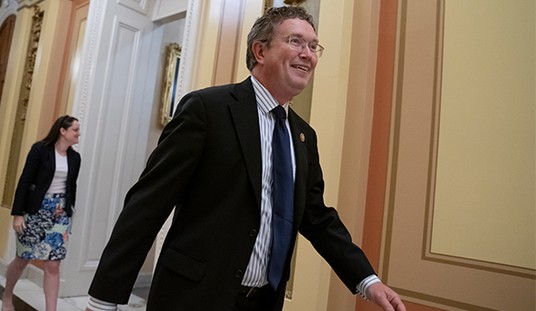Climate change campaigners are complaining bitterly that global warming and greenhouse gas reduction were entirely missing from the presidential and vice-presidential debates. However, it was discussed — just under a different title.
In every debate, “clean energy,” “green energy,” and solar and wind power came up at least once, in some cases repeatedly. This is indirect climate policy: the drive to enable these technologies — which happen to be supported by all four candidates — is primarily the result of the belief that it is important to reduce carbon dioxide (CO2) emissions to prevent a global climate crisis.
Without climate concerns, clean and green energy would refer only to low pollution energy sources, not to low CO2 sources (which is an essential reactant in plant photosynthesis and in no way a pollutant). Developed countries have been very successful in reducing real air pollutants, such as sulphur dioxide, nitrogen oxides, particulates, lead, and others. With the exception of ground level ozone, which has been difficult to reduce in many metropolitan areas, even our largest cities have much cleaner skies (and waterways) than they had decades ago.
So, without the climate scare, there would be little reason for wind and solar power to have such prominence now. They would only be considered as niche applications in special circumstances.
Someday, perhaps these power sources will be reliable and efficient enough to complete with conventional fossil fuel, hydropower, and nuclear sources without heavy government subsidies. Yet we are a long way from there.
The approach of boosting low “carbon” energy sources as an alternative path to arrive at the climate movement’s goal — “de-carbonization” of humankind’s energy sources — has been planned for some time. For example, the Nathan Cummings Foundation (NCF), a $10 million-plus donor to climate change campaigns between 2005 and 2010, explained the need for a new, less direct approach in their Annual Report 2009 (see p. 16, “Ecological Innovation Program”). They expressed concern that grantees were overly emphasizing direct CO2 emission reduction and other costly measures to address climate change. NCF discussed how this left organizations they support open to damaging attacks from their opponents when promoting government and industry action on climate change. Presumably, NCF and their allies could see how the public were coming to realize that the costs of CO2 emission reduction were anything but trivial, and the raison d’être for the activities — the science — was also being increasingly questioned. So a new approach was needed.
NCF explained in their annual report that the foundation’s desired focus is on the supposed benefits of low CO2 energy sources, instead of direct CO2 restrictions on conventional power plants. The idea was to change the paradigm of the discourse in America: instead of making conventional energy sources more costly, the objective was to present low CO2 emitting energy sources as inexpensive “in order to engage many more people.”
NCF Annual Report 2010 (the latest available) discusses this further:
- NCF grantees are working to make clean energy innovation a core component of the new mainstream approach to climate policy.
- Experts estimate that it will take annual investments on the order of $500 billion to $1.5 trillion globally to effect a transition to a clean energy economy. Most of that money will need to come from private investors and NCF grantees are engaged in a complimentary set of efforts to ensure that those investments will be made.
- They [NCF grantees] are working to develop a more powerful advocacy community for clean energy investments.
NCF and their allies have certainly succeeded. Media now regularly report glowingly on so-called clean energy projects, activities that have as their main objective reducing carbon dioxide emissions — or “global warming pollution,” as many journalists erroneously call it. President Barack Obama used this approach in his 2011 State of the Union address, and then in his 2012 address as well.
As a consequence, public opinion surveys now often show strong public support for “clean” energy sources such as wind turbines and solar power. By January 2011, Rasmussen, after polling in the U.S., released a document titled “Support for Renewable Energy Resources Reaches Highest Level Yet.” In July 2011, Rasmussen even found that “51% Say Government Should Force Oil Companies To Use Profits To Develop Alternative Energy.”
But alternative energy is extremely expensive and relies on huge taxpayer subsidies. To use such intermittent and diffuse power sources requires that the consumer pay between three and ten times the price of power from conventional sources.
Energy independence is not a good reason for promoting new renewable energy technologies, either. Energy independence is more easily — and much more cheaply — attained by exploiting abundant national fossil fuel reserves, and then by spending some of the wealth created on research into potential new energy technologies.
While large direct climate change programs continue across the world as well, the child of the climate scare — the drive for low carbon dioxide emitting energy sources — has grown up and now threatens our energy security. With twenty-nine American states and the District of Columbia now enforcing renewable energy mandates, hundreds of billions of dollars are being squandered on wind turbines, solar power, and most biofuels.
At the same time, conventional power supplies are often neglected, thereby threatening our energy security, triggering higher energy prices, and placing millions of jobs and the economic futures of many countries at risk. Tragically, most energy companies have totally succumbed and now are feeding the fire that threatens to burn down their industries.
We can no longer allow our politicians to promote so-called green energy solutions without holding them to account for what they actually cost and for their ineffectiveness at providing the reliable base load power needed by a modern industrial society. Unless this climate policy by stealth is recognized for what it is and halted quickly, millions of people will be left hungry and freezing in the dark.









Join the conversation as a VIP Member